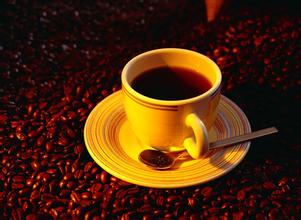Growers will not use natural washing for ultra-high quality coffee beans.
Growers will not use natural washing for ultra-high quality coffee beans.
Some plantations that have not used honey treatment in the past have to use the tools at hand to process the coffee. Since raw bean processing plants in most regions, such as Latin America, Kenya and Ethiopia, used to use water to transport raw coffee beans, coffee beans lose some of their mucous membranes during transportation. In places such as Costa Rica, Brazil or Colombia, local processing plants used to use high-pressure washing machines, so part of the mucous membrane was removed during the peeling process. According to the amount of mucosal residue (40% Mel 100%), honey treatment is divided into 4 grades: 40%, 60%, 80% and 100%. Of course, some growers deliberately remove part of the mucous membrane to ensure that the coffee does not become sour due to fermentation during the drying process. The light time of raw coffee beans treated with yellow honey was the longest. Longer light means higher heat, so the coffee can be dried within a week. In general, the drying time of coffee depends on the local climate, temperature and humidity. The drying time of raw coffee beans treated with red honey is 2-3 weeks, usually due to weather or placed in a dark place. If the weather is clear, the grower should block part of the sun to reduce the sunshine time. The coffee beans treated with black honey were left in the dark for the longest time and the shorter the light time. The drying time of this coffee is at least 2 weeks. The black honey treatment of raw coffee beans is the most complex and the labor cost is the highest, so the price is the most expensive.
1. Natural solarization (Natural/Dried-in-the-Fruit)
The process of this method is the simplest. The fruit begins the process of sun drying without treatment after picking. This is the oldest method of treatment in existence. This method is still used in places such as Ethiopia and Brazil. Natural solarization is most common in areas where water resources are scarce. The drying process usually lasts about 4 weeks. The method of handling must be very strict to ensure that the coffee does not lose any flavor. The natural sun method requires the local climate to be extremely dry. In some areas, people use dryers to assist in the drying process of coffee fruit (the hot air of the dryer can speed up the drying process and help people control the degree of drying).
Natural sunlight can retain the fruity aroma of coffee fruit. When you taste this kind of coffee, you will find that the coffee has a fruity aroma and a brighter taste. After drying, people will use special machines to remove the shell of the surface layer. This process is called drying and shelling (Dry Milling).
two。 Washing method (Washed)
In the process of washing, the peel and pulp of the fruit are treated with a special desizing machine and the coffee beans are peeled off. The coffee beans then enter the fermentation tank for fermentation treatment so that the mucous membrane is no longer sticky. The sugars in the mucous membrane are decomposed during fermentation. Depending on the fermentation method, the fermentation time is usually 12 hours to 6 days (some growers use the watering system to ferment coffee beans. This method is called the Kenyan washing method (Kenyan method) and usually lasts for several days). It is extremely important to decide when to stop fermentation. Once the coffee is overfermented, the taste of the coffee will become too sour. Once the sticky material in the mucous membrane is decomposed, it will be washed down with a lot of water. (the waste water from the raw bean treatment process is considered to be the source of pollution in the coffee industry. Today, advanced technologies are being developed in many areas to recycle and filter the waste water produced by this process. Water shampoo was born in the 19th century, also known as "wet processing".

Important Notice :
前街咖啡 FrontStreet Coffee has moved to new addredd:
FrontStreet Coffee Address: 315,Donghua East Road,GuangZhou
Tel:020 38364473
- Prev

Introduction to the recent Standard extraction time of Coffee extraction rate Formula
Coffee extraction rate formula recent standard extraction time introduction to measuring the quality of coffee dates back to the 1950s. At that time, E.E., a professor in the Department of Chemistry at MIT. Lockhart conducted a series of surveys to study American taste preferences. In general, he surveyed many people who drank coffee and asked them about their preferences. Lockhart uses
- Next

How to make espresso pressed powder unbroken after extraction
How to make the espresso pressed powder unbroken after extraction? when you want to present a skill in words, you will find a lot of inconvenience. In terms of powder pressing, it can be roughly divided into coarse powder heavy pressure school, fine powder light pressure school and non-powder pressure school, no matter which school you belong to can make a perfect esp of different styles, of which the non-powder school is the most minority and difficult to master, because it takes a lot of energy and time to find.
Related
- What is the meaning of lactic acid fermentation with coffee bean treatment?
- How to judge the state of foam by sound?
- How does the latte pull out the unicorn pattern? Come to get for a little trick to improve the flower pull!
- Will flower pulling affect the taste of the latte?
- Do you know the history of coffee?
- The difference between honey treatment and sun washing what is raisin honey treatment?
- What kind of milk can a novice use to make coffee foam to keep the foam longer? The correct method and skills of milking tutorial sharing
- Why do washed coffee beans taste sour? Flavor characteristics of washed Coffee
- Introduction to the skill of how to practice the size and height of water injection around the circle of hand-brewed coffee
- How do beginners practice coffee flower drawing from scratch?

